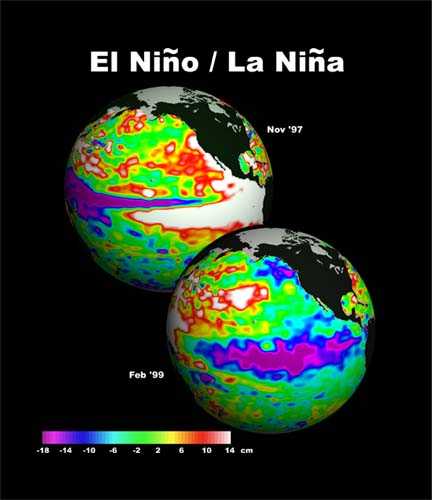by Ina Porras
Conversion to monoculture continues despite the multiple benefits from improved agricultural systems, such as shade coffee. Have we finally found the arguments to turn the tables, asks Ina Porras after a side event at the Global Landscape Forum.
A cup of coffee. We are drinking more coffee: the International Coffee Organisation says world coffee consumption has been rising by an average of 2.3 per cent per year (Photo: Benedicto de Jesus, Creative Commons via Flickr)
A cup of coffee. We are drinking more coffee: the International Coffee Organisation says world coffee consumption has been rising by an average of 2.3 per cent per year (Photo: Benedicto de Jesus, Creative Commons via Flickr)
It’s early morning in Paris. As I sip my coffee my head buzzes with excitement recollecting my first day at the Global Landscape Forum. And more to the point: a session on smallholder coffee farming where data and people combined to prove a blatantly obvious point: if we do not act soon, that cup of coffee will not be on my table any more.
Your cup is in danger, too
We have an insatiable appetite for coffee. World demand continues to rise despite financial fluctuations. The International Coffee Organization estimates that in 2014 we consumed nearly 150 million bags of coffee (PDF). That is 24.6 million kilos of coffee per day.
Did you know that a lot of this coffee is produced by small family farms? According to Merling Preza, director of a cooperative in Nicaragua, 95 per cent of Nicaragua’s coffee is grown by smallholder farmers.
And these farmers are facing the incoming tide of climate change. Coffee quality and yields are highly sensitive to rainfall and temperature. With little access to resources to invest in technologies, and facing the daily struggle for survival, these farmers are bearing the brunt of the cost.
Number of the table, please
Improved agriculture practices, such as organic farming or shade systems, have been shown to be more environmentally friendly than conventional, monoculture coffee that relies on chemical fertilisers. The trees provide shade for crops, fruit, fodder or timber for the farmer, depending on the species used. Organic fertilisers using compost increase nutrients and reduce the need to purchase external inputs. But they are also expensive.
The discrepancy between the short-term investment costs and the medium to long-term perception of benefits is a killer for smallholders, as is the access to technical training to comply with the certification procedures usually attached.
Planting trees to create shade may be good and looks nice, says Preza, but they take away space where another coffee plant may have been producing berries that can be sold.
But new studies show that the numbers may be turning. Pita Werweij from Utrecht University shared a study that provides hard evidence that agroforestry coffee systems in Peru are less expensive to run than conventional coffee systems. The micro-climate impacts from the shade helped to limit heat variations. This is crucially important for coffee.
Biodiversity benefits, too. The study found for example, that the number and species of butterflies in these areas are much higher than in conventional coffee growing areas, and significantly close to what we would find in natural forests.
These results are in line with those from CafeAdapt, which invests in climate-resilient coffee landscapes in Guatemala and Nicaragua.
Waking up to the call
Ever mindful of business, the private sector is finally waking up to the advantages. For Mario Cerutti from Lavazza this means action: “Five years ago the question was ‘is climate change being pushed by human activity?’ For the coffee sector now we are beyond questions, we realise this is our last chance”.
A last chance to act and respond to climate change in a way that is predictable, and to a certain extent controllable. Lavazza has committed to upscale from a pilot project supporting 3,000 farmers to a large-scale programme for 70,000. This is a great step – yet there are millions of small farmers out there that need support.
Partnerships and innovative mechanisms
The private sector is starting to feel the cost of risks in the supply chain and are responding, yet much more is required. Upscaling solutions will require a mammoth effort that must be shared by many.
Governments are also taking action. The NAMA project in Costa Rica for example is a collaboration right along the value chain to promote a low-carbon coffee sector that is compatible with resilient livelihoods.
According to Ivannia Quesada, Vice Minister of Agriculture in Costa Rica, this approach will only be taken up more widely if productivity can be improved in ways that are clear and measurable.
Shaping new, sustainable markets
The workshop also discussed how carbon markets can help support smallholder agriculture. Changing practices to reduce emissions generates a new product: carbon offsets. These offsets, once certified, can be sold on international markets and the revenues invested back on the farm. Further links could – eventually – be made for biodiversity conservation and watershed services.
A recent study by IIED and HIVOS in Nicaragua, Guatemala, Peru, Kenya and Indonesia shows significant potential for carbon revenues to contribute to farming.
Once heralded as the silver bullet to switch to sustainable practices, we have now a more sobering understanding of the business potential of market-based instruments like payments for ecosystem services or premium prices for organic products.
These revenues are opportunities to support the change to better practices, and through monitoring they can also provide long-term feedback systems for the farmer.
A call to COP21
But markets are not going to change by themselves. Markets signals are all wrong, and continue to react with short-term savagery to hiccups in the financial sector. But the problems, and solutions, to climate change adaptation and mitigation require long-term thinking and acting.
Markets need to be regulated, and all the players, including governments, the private sector, and civil society, need to learn to play by these rules.
*Ina Porras (ina.porras@iied.org) is a senior researcher in the Sustainable Markets Group. She was a speaker at the Global Landscape Forum side event on the role of acroecology in exploring innovative, viable adaptation measures for resilient smallholder coffee landscapes on 6 December.










